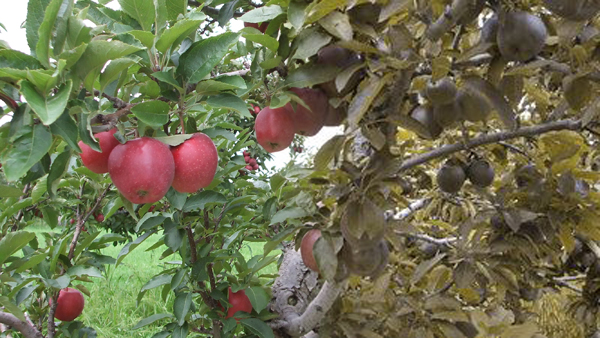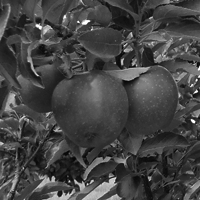What Does the World Look Like to Color Blind People?
This is a very difficult question because we can never truly know what someone else is perceiving and a color-blind person can't really describe colors in a way that is meaningful to those with normal color vision. We can, however, make some reasonable guesses and there is an interesting website, vischeck.com, that does just that. The image of the apples above was made using the software from that site.
We know that color-blind people are missing one of the cone types, so we can take a full-color image, transform the information to normal cone responses, delete one of those cone responses, and then transform the image back to RGB for display to see what they are missing. This does tell us which colors would be confused by the color-blind observer, but it doesn't really tell us what they look like since we are still viewing them with a normal color vision system. This technique also does not account for visual adaptation. The software at vischeck.com, does this first step, but it also approximates visual adaptation. It does that by assuming that equal cone responses produce neutral color perceptions (white, gray, black) in color-blind people, just like they do in others. This defines what looks neutral to the color blind-person and maps those colors to the grays that a person with normal vision sees. That gives us a better idea of what the color-blind person might be perceiving.
However, we still can't be completely certain. All we can really do is ask a person with color-blindness if the original image and the processed image (left and right sections above for a deuteranope) look alike. If they do, then we know we have removed the correct information, but we still can't say that we are seeing the same thing they are. And we never really will be able to. That alone is something to ponder!
![]()
Explore the NEXT TOPIC at this level.
Explore the NEXT LEVEL on this topic.
Ever wonder ... Why can't we see all the different colors (wavelengths) within one color?
Updated: Apr. 19, 2011

